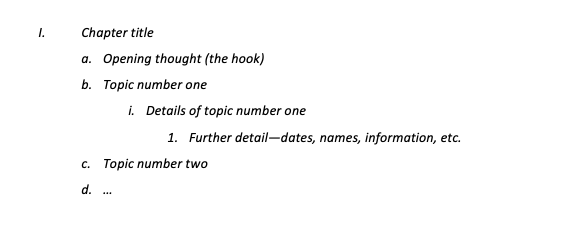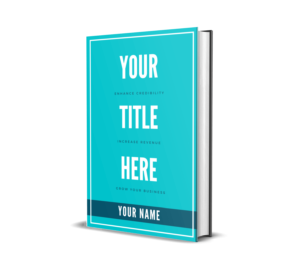How to Create Your Book Outline (with Examples)
The idea for your book is no longer a concept. You have formulated a plan, determined your target reader and the writing style that works best for that reader. Now you’re ready to create your book outline.
In the outline, you will piece all of these ingredients together in a way that gives meaning and purpose to the book you are about to write.
How will your book be structured?
Are you telling a story through a character with lessons built in throughout, like Michael Gerber’s The E-Myth?
Are you telling your story through a memoir or autobiography like Phil Knight’s Shoe Dog?
Is your book going to be purely instructional and educational like Financial Intelligence by Karen Berman and Joe Knight?
Or has your career taught you so many things you’d like to combine your life’s lessons through storytelling the way Chris Voss has done in Never Split the Difference?
Each of these books is fantastic in its own right. The writing styles vary widely, but they have all been deemed as some of the most influential books to their respective audiences. This is proof there are many successful ways to write a nonfiction book.
Want to write a book in 2022?
The important thing is you can connect with your readers and respect their time by providing valuable, actionable advice.
Now is the time to unleash that creativity. Think about how you envision your book. What’s the powerful opening hook? How will you structure it from there? What journey will you take your reader on and what will the end result be? What do you want them to do as soon as they read the final page and close the book—what’s the call to action?
As you begin to outline, these are questions you should ask yourself.
The Process Is (Sort Of) Open-Ended
No two writers are the same. Some processes that work well for some authors won’t be the best for others. Believe it or not, this is true for a single book project as well. Some processes simply work better for some books while an entirely new process is better for others.
The point is there is no singular method for outlining your book. You need to do what makes you most comfortable.
That being said, there are two primary methods to create an outline for your book.
Outline Method #1: The Comprehensive Outline
This is the method to create your book outline we use to work with clients at Visionary Literary. It’s the one we have found to be best, and the consensus among clients is that it works. Hashing out all the details before writing a single line of the manuscript makes both parties feel more confident moving forward.
Why does it work? It completely eliminates the roadblocks during the writing process. And with writer’s block being such a daunting weight on the shoulders of a writer or ghostwriter, removing its existence leads to higher quality writing, faster results, and happier clients.
The comprehensive outline works in a bulleted method. It’s the outline you learned to use in school—the default outline for most word processors and an easy-to-decipher model if using paper.
Here’s a brief example of the layout:

Is it boring? Absolutely. But is it effective? It sure is.
Let me first tell you why it’s been effective for us, as ghostwriters, and then how it can be effective for you.
As a ghostwriter, writing a book for a client who will put their name on the cover, it is a high priority to nail the client’s voice. After all, if a friend or family member reads your book, you don’t want their first response to be, “This doesn’t sound like you.”
Our job as professional ghostwriters is to take your verbal tone and convert it into written words. The goal is to have the voice in the book so close to your own that you could read the pages aloud flawlessly, without stopping to wonder whether you’d say the words on them.
For us, from this professional standpoint, building a comprehensive outline that contains all the information, in order, with every little detail included does one thing: it allows us to concentrate solely on writing in your voice.
When you write your own book, finding the right tone might not be as important. It will obviously come more naturally to you than it would to a paid writer who has only spoken with you on a number of occasions and listened to just a few short hours of your recorded audio.
Writer’s block will still become an issue, though. It’s almost a guarantee. When you write at this length, it’s inevitable that you will hit rough spots.
Writer’s block is one thing, but information gaps are entirely different. They require one of two things. One, you stop, go back and do the necessary research. Or two, you leave a note inside the manuscript to come back to it later. Either way, you’re impeding your progress.
Avoid the chaos. Avoid the unnecessary gaps. Work on a detailed outline and have all of that information listed, structured, and clear. It will do wonders for your manuscript when it comes time to write that first draft. It will, hold your breath, be fun to write, not a burdening project.
And a quick note here: your outline can, and will, change. Don’t get caught up in having the outline written down perfectly. Get something down you are comfortable with, and you can make changes along the way.
Outline Method #2: The Overview Paragraph
Short, choppy outlines aren’t for everybody. That’s okay. If you prefer long-form explanations to short-form notes, then a paragraph-style outline might be best for you. This format allows you to get everything out in large blocks of text.
Write your book and have it published to Amazon, Barnes & Noble, and more…
The downfall: it isn’t as easy to follow along once you begin writing your first draft. Rather than being able to see everything in a clearer fashion—bulleted topics, subtopics, and information—the paragraph can sometimes be stuffed with information in no particular order.
However, this works well for some authors. They prefer to get everything out in paragraph form because the paragraph itself can have some structure, which helps when it comes time to write the first draft of the manuscript. It can also be writing practice for the main event.
Here’s how the overview paragraph style of outlining looks, written as if the author of the book is a marketing expert with a company supporting small businesses.
Chapter One:
The reader will be introduced to Angela Adams, the character who is facing struggles in her business similar to the ones the reader is currently facing. Her marketing department is struggling to navigate through the vast sea of advertising opportunities and her business has hit a plateau as a result. She came to our company in dire need of help and she felt like she was alone in her dilemma. Our team let her know that she isn’t. In fact, many business owners struggle to get to that next level of marketing. What we have promised Angela is that we can help her to get past those roadblocks by initiating Plan X, Plan Y, and Plan Z, which will be introduced in great detail inside this book. The reader should be prepared to take diligent notes and to put these plans into action.
Chapter Two:
(This chapter will introduce Angela’s problems.) Our team sits with Angela at an outside café. The weather is beautiful and it can be said that the energy from the sun and caffeine can’t help her. She’s disheveled. We listen to her problems and she pours them onto the table. She’s shy and doesn’t want to be in front of a camera to enhance her social media presence. She also spends thousands of pay-per-click advertising dollars per month but sees little in return. However, she doesn’t know if there are any other options. That’s when we begin to pull apart her strategy and show her the different paths that she hasn’t been able to see. After a long conversation, the exhaustion leaves her face and for the first time since talking to her, there’s a glimmer of hope.
Chapter Three:
Angela leaves the meeting with a portfolio…
Notice how the paragraphs are very high level. The detail isn’t included because the detail is already highlighted elsewhere. It’s in an online course, your business plan, or some other document—maybe it’s all stored safely in your head.
For writers who opt into this method of outlining, time seems wasted by writing down all the intricate details because those details can come out in the draft. With the overview paragraph outline structure, you’re more focused on how the book will flow—how one thought will move into the next.
You can see why this is something we don’t use with clients. Our ghostwriters need more information. We need the granular details and the thorough stories.
Without this information, we’re at a loss. We don’t have your years of expertise and knowledge in our heads. The job of the ghostwriter is to pull all that from you and get it into that first outline example—the comprehensive outline.
The Length of Your Outline
How long should your outline be? That depends on which outline you choose to use. For the comprehensive outline model, a typical outline ranges from seven single-spaced pages all the way to twenty-five pages.
If you’re opting into the overview paragraph style, there will be a much wider range for the typical page length. The detail you add and the depth to which you want to explain each chapter’s premise will determine the total length of your outline.
There’s no right or wrong outline type. Obviously, the longer the outline, the more information you have to work with when writing the first draft of your manuscript. But a short outline doesn’t mean you will have a short book, nor does it mean you will have a weak book.
Want a suggestion to create your book outline? Throw the entire kitchen sink into it. It’s much easier to cut the fat as you write than to go back into a finished manuscript and add key points.
If you find yourself struggling to add content to the book, you can always add case studies, testimonials, visuals, or sidebars to beef up the final page count.
Need some help creating your outline and formulating your book? We’re here to help. Reach out to one of our book creation experts today.


